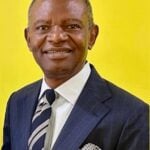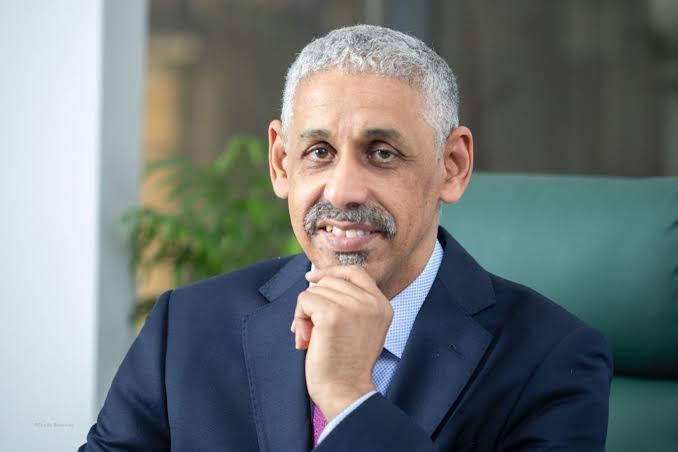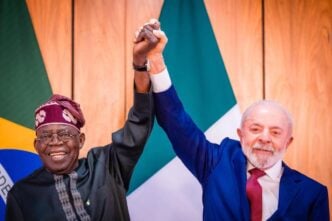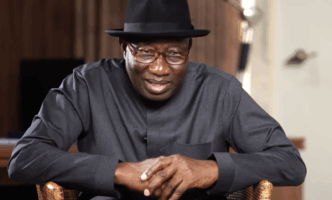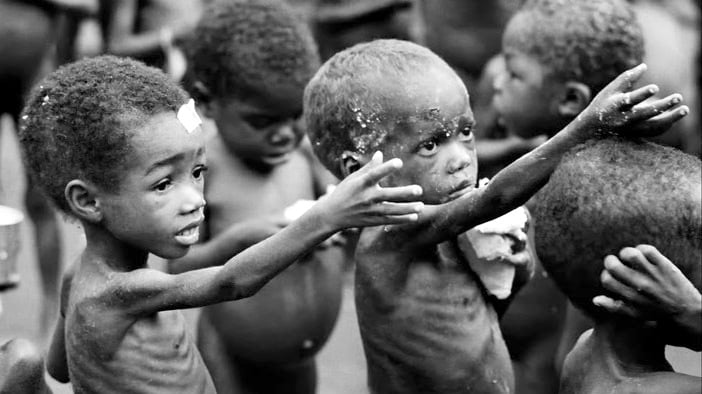When the U.S. Treasury transmits its annual report to Congress on the international financial institutions, few in Africa pause to read the fine print. These reports are often regarded as instruments of Washington policymaking, not as mirrors reflecting Africa’s evolving agency. Yet the most recent report released on July 16, 2025 carries a message that is impossible to ignore: it recognizes the election of Dr. Sidi Ould Tah as President of the African Development Bank and situates his leadership as pivotal to American strategic and commercial interests in Africa.
This is not a minor footnote. It is a testament to how much has changed in the perception of African leadership at multilateral banks. For years, skepticism abounded in Washington regarding whether African-led institutions could align with the values of transparency, accountability, and private sector orientation that U.S. policymakers sought to uphold. Dr. Tah’s campaign strategy and messaging, successful historic election, coupled with a sustained campaign of engagement post election with U.S. administration officials, members of Congress, think tanks, and philanthropic actors, has helped turn the tide of opinion.
The implications are profound. For the first time in decades, the African Development Bank (AfDB) presidency is being described not only in terms of continental priorities but also as an integral part of the global financial architecture where U.S. interests and African aspirations can converge.
From Campaign Engagement to Institutional Legitimacy
Advertisement
The NAC report explicitly frames Dr. Tah’s presidency as an opportunity to advance priorities that matter in both Washington and Abidjan: expanding affordable energy access through an all-of-the-above approach, reforming procurement to ensure value-for-money, and strengthening institutional governance. As the report puts it, “As Mauritanian national Sidi Ould Tah takes on the Presidency of the AfDB for a five-year term starting September 1, 2025, we will work with the new President to advance the Administration’s key priorities at the Bank of 1) expanding financing for all-of-the-above energy projects prioritizing affordability in energy investment; 2) reforming the Bank’s procurement policies to ensure value-for-money and fair and competitive procurement; and 3) continuing our focus on the Bank’s governance, effectiveness, and impact.”
During the campaign, and post election, much effort has been devoted to bridging the gap between African realities and U.S. strategic concerns. By engaging administration officials at U.S Treasury and other departments on the role of the AfDB and its potential for strategic alignment with broader objectives, by discussing with congressional committees on the importance of preserving U.S. shareholding at AfDB, by demonstrating to philanthropic institutions that African finance could be a partner in innovation, and by showing think tanks that AfDB can be a knowledge partner and bulwark against opaque and coercive lending practices, Dr. Tah’s team succeeded in repositioning the Bank in the eyes of critical stakeholders. That shift is now codified in the U.S. Treasury’s own language.
Execution: Delivering Tangible Outcomes
Advertisement
The first of Dr. Tah’s cardinal points is execution. The African Development Bank under his leadership will not be a place of grandiose declarations detached from reality. Instead, it will focus on delivering measurable outcomes that improve lives across the continent. The fact that U.S. policymakers have acknowledged the Bank as a vehicle for creating opportunities for American firms while simultaneously supporting African infrastructure, agriculture, and digital systems is itself a recognition of execution at scale.
Execution means ensuring that every dollar mobilized—whether from African treasuries, international shareholders, or private investors—delivers tangible results: roads linking farmers to markets, airports connecting countries for trade and travel, power plants bringing electricity to underserved communities, and financial systems supporting businesses of all sizes. It also means proving, with data and transparency, that the Bank upholds the highest standards of accountability. The U.S. report to Congress specifically calls for “executing the action plan on institutional governance, which will strengthen the audit, evaluation, integrity and redress units.” This aligns perfectly with Dr. Tah’s insistence that institutions must prove their fitness through results, not rhetoric.
Scale: Mobilising Capital Beyond Aid
The second cardinal point is scale. Africa’s needs are vast and cannot be met by concessional resources alone. Here too, the NAC report shows a new recognition: U.S. policymakers see AfDB as a crucial platform for mobilizing private capital and for creating transparent alternatives to non-traditional lenders.
Advertisement
Dr. Tah’s campaign repeatedly emphasized that Africa does not seek to be trapped in cycles of dependency. Instead, the continent must position itself as a partner in global markets, capable of absorbing investment at a scale commensurate with its population growth and development ambitions. The Bank will focus on leveraging callable capital, blending resources, and creating instruments that make African projects bankable.
For Washington, this is not charity. It is an opportunity to expand markets for U.S. exports, deepen global supply chains, and create investment opportunities. For Africa, it is about ensuring that scale is not synonymous with unsustainable debt, but with long-term productive growth.
Innovation: Designing the Future of Development Finance
Innovation is the third pillar. The U.S. report stresses energy strategies, procurement reform, and digital safeguards. Each of these areas demands innovation, not repetition of old models.
Advertisement
Dr. Tah has been consistent in arguing that Africa cannot simply replicate past formulas of development. It must innovate in financial instruments, in climate adaptation strategies, in food systems, and in digital transformation. For example, guarantees that de-risk private capital in fragile states and smaller enterprises, and blended finance that drives innovation and smart industrialisation, are not optional experiments but necessities — they are imperatives.
This is why the Bank’s innovation agenda will include a new generation of partnerships with philanthropy, venture finance, think tanks, and technological pioneers. The campaign engagements with U.S. philanthropic institutions and think tanks were not symbolic—they were deliberate efforts to open doors for innovation. The message to Washington was clear: under Dr. Tah’s leadership, the AfDB will pair faster, more agile decision-making with innovative, practical solutions designed to deliver transformative impact at scale.
Advertisement
Inclusion: Putting People at the Center
The fourth cardinal point is inclusion. At its core, the African Development Bank exists not to serve abstract balance sheets but to transform the lives of African people. The U.S. report highlights AfDB’s importance in supporting SMEs, building the African middle class, and expanding affordable energy access. As the report notes, “The AfDB plays a critical role in developing and opening African markets for U.S. businesses. AfDB financing helps develop physical and telecommunications infrastructure that boosts trade, leverages business climate reforms, supports local SMEs, and contributes to the growth of an African middle class of consumers.” These are all economic growth and quality of life issues.
Advertisement
Dr. Tah has been clear: meeting Africa’s demographic challenge means giving young people and women access to finance and opportunity. Stability requires that fragile states are not left behind in the pursuit of regional integration, and that job creation goes hand in hand with relevant education, vocational training, and reskilling. These are essential to safeguard the future, provide security in the present, and drive growth in tandem.
Such strategies are not charity—they are the foundation for sustainable markets. U.S. policymakers increasingly understand that fragile and excluded populations generate instability and migration pressures. AfDB’s demographic and geographically balanced agenda thus serves both African dignity and U.S. strategic interests.
Advertisement
A Convergence of Interests
What makes the present moment unique is the convergence of African aspirations and U.S. interests. For decades, African leaders have sought to convince Washington that the continent should be treated not as a problem to be managed but as a partner in global growth. The election of Dr. Tah, and the subsequent recognition in U.S. policy documents, demonstrates that this argument is finally gaining traction.
This convergence also comes at a time when the global financial system is under strain. Competing lending models, from China and elsewhere, have created debt vulnerabilities in many developing countries. Multilateralism itself is being questioned. In this environment, AfDB under Dr. Tah can stand as a symbol of how Africa can shape global institutions to reflect both continental needs and international standards.
Tah Time for Optimism
The path ahead will not be easy. AfDB must navigate capital adequacy questions, governance reforms, and the complex geopolitics of shareholder expectations. Yet optimism is warranted.
For Africa, Dr. Tah’s presidency represents the maturation of continental leadership: an affirmation that African voices can lead with competence and vision. For the United States, this time represents an opportunity to align values of transparency, accountability, and private sector development with Africa’s growth trajectory.
For both, Tah Time is a chance to demonstrate that development finance in the twenty-first century can be results-driven, scalable, innovative, and inclusive.
Conclusion: Building Together
The recognition of Dr. Sidi Ould Tah in the U.S. Treasury’s report to Congress is more than a diplomatic courtesy. It is an institutional acknowledgment that Africa’s leadership in multilateral development finance has credibility and global significance. It is proof that sustained engagement — across administrations, Congress, philanthropy, and think tanks — can reshape narratives and turn skepticism into support.
As Dr. Tah begins his mandate, he does so with a renewed sense of legitimacy, not only from African shareholders but also from partners who once doubted. His four cardinal points provide the compass. The task now is to translate them into the daily work of financing infrastructure, mobilizing capital, fostering innovation, and ensuring inclusion.
If he succeeds, the African Development Bank will not simply be a regional lender. It will be a cornerstone of a more balanced, transparent, and prosperous global financial system. And Africa, at long last, will take its rightful place not at the margins but at the center of shaping the world’s economic future.
Frank Aigbogun is an experienced financial journalist and founder of BusinessDay, a fully diversified media outlet operating out of Nigeria.
Views expressed by contributors are strictly personal and not of TheCable.
